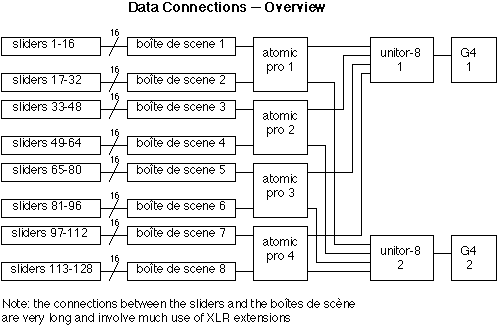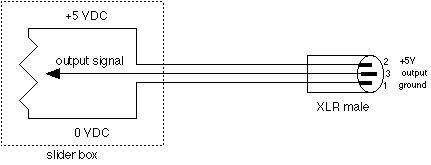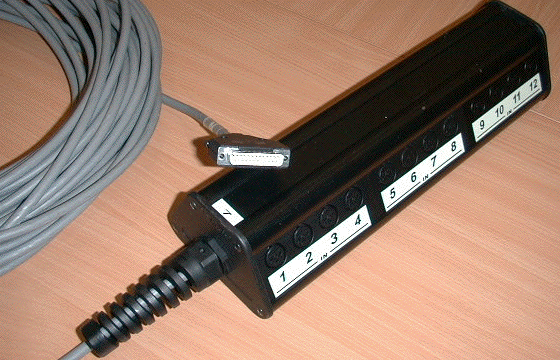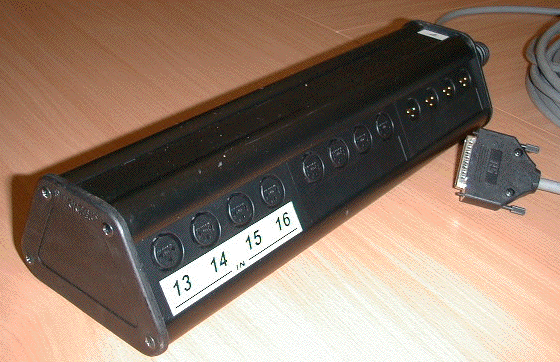

The Atomic Pro is used to convert the position of the slider in a slider box into MIDI.
Each Atomic Pro has two female DB25 plugs which provide 5 volt power, ground, and 16 analog inputs. Each slider is connected in a voltage divider circuit, with +5 volts, ground, and analog output on the three pins of its XLR output.

| Schematic diagram of boîte de scène, including distorted caricature of the slider boxes. The female XLR connectors in the boîte de scène are not pictured. | 
|
| Female XLR inputs 1 -- 12. Note the ID number on the top and the 30 meter cable with male DB25 connector at the end | 
|
| Inputs 13 -- 16. The other eight connectors are not used. | 
|
There are 30 meters of cable between the boîte de scène and the DB25 connectors for the Atomic Pro. These are the cables intended to pass between the auditorium and the noisy machine room via some sort of acoustically isolated cable passage.
There being two DB25 analog input plugs on the Atomic Pro, there are two boîtes de scène per Atomic Pro. We use four Atomic Pros, thus 8 boîtes de scène, to be able to treat 128 slider boxes.
The boîtes de scène are laid out in the auditorium close to the passage to the machine room; the slider boxes are fixed to seats in the middle of the auditorium; so inevitably a whole lot of male-female XLR cable (such as microphone cable) is necessary to connect the slider boxes to the the boîtes de scène, as will be discussed in the section on Auditorium installation
The boîtes de scène were named by the technical people who concieved them. Literally, it means "stage box", but that phrase is so ambiguous it invites all kinds of inappropriate interpretations. We decided to keep the original name, barring objections, in order make the whole business seem real classy and sophistiqué, but, on the other hand, not to put it in italics. There are limits.
| AtomicPro no. | AtomicPro inputs | |
| Analog in (1-16) | Analog in (17-32) | |
| 1 | 1 | 2 |
| 2 | 3 | 4 |
| 3 | 5 | 6 |
| 4 | 7 | 8 |
| boîte de scène no. | ||
Although it is of no importance which inputs are used on the Unitor 8 (once it's properly configured), by convention the connections are made in the following way: